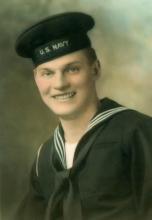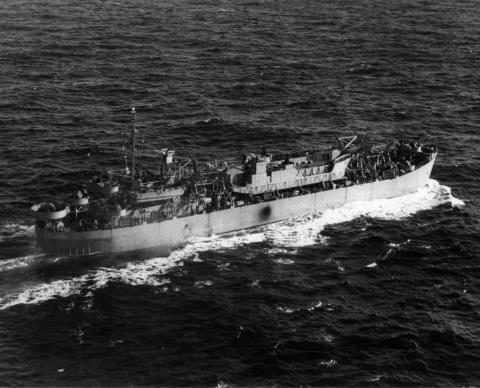Our website was created to help the family members of those who died and participated in Exercise Tiger. Dean Small, son of the late Ken Small, continues with his father's legacy. We are endorsed by the survivors and the families.
Steve Sadlon Survivor Story - LST 507
STEVE SADLON U. S. Navy – LST 507 Seaman 2nd Class - Radioman Deceased June 2014
 |
| Steve Sadlon |
I was the radio operator on board LST 507. I was asleep in my sack when I was awakened by a scraping noise along the side of our LST. It was a torpedo that didn’t explode. General Quarters sounded a moment later and I ran for the radio shack. I sat down in my chair I in front of my typewriter and was starting to get the radio going when a second torpedo hit right below where I was in the auxiliary engine room. I was thrown out of my chair by the concussion from the exploding torpedo. My head hit the overhead bulkhead and knocked me out. One of the radio transmitters that was as large as a refrigerator toppled to the floor beside where I was sprawled. When I woke up after the torpedo hit us, I staggered from the radio shack through a companion way into the wheelhouse. All of the ship’s officers were gathered in the wheelhouse. All hell was breaking loose aboard ship. Fire was everywhere, ammunition as well as gas cans were exploding. Sailors were running all over the place. The captain couldn’t get any of the pumps or the engines going because we had lost all electricity. We had nothing, we were a floating, burning hull of a ship. Finally the skipper gave the order to abandon ship. The assistant navigator was in the wheelhouse with me. He suggested that the two of us head to the stern of the ship to escape the inferno. The stern was bedlam, with scores of soldiers and sailors all trying to figure out what to do next. Our signalman was standing in the stern with the rest of them. He told me he wasn’t going to jump into that cold water. I pointed to the fire and explosions behind us and told him, “Take your choice: you either burn to death on the ship or you’ll freeze to death in the sea.” That was the last I saw of him. He stayed aboard the ship and apparently burned to death. The assistant navigator and I jumped over the side of the LST into the near freezing water 25 feet below. He took off his shoes before he took the plunge. The sea around the ship was covered with an oil slick from the badly damaged LST, and the surface was on fire. We had to escape the burning oil. There were hundreds of guys all around us in the water screaming for help. There were dead bodies floating everywhere. We got past the burning water, the dead, and the people yelling for help. During that time I lost my buddy and never saw him again. I floated by this officer who told me to save my breath and stop screaming for help like the rest of them because nobody is going to help us. When I jumped ship, I was wearing a CO2 charged floatation belt that I credit for saving my life. I quieted down and my flotation belt slipped up under my arms. My head fell back on one shoulder and kept my face out of the water as hypothermia started taking control of my body in the 42 degree water. Just before I passed out, I can remember seeing my mother’s face. She was holding me in her arms and protecting me. I was a little kid again. I woke up on another LST. I was lying on a mess table in the crew’s quarters with 10 Army blankets over me. A corpsman patted me on the shoulder and said, “You are a lucky guy. We were piling up dead people from your ship and you were foaming at the mouth. So we picked you up and started working on you.” The next thing I knew I was in an American military hospital in England. After getting out of the hospital a week or two later, I was reassigned to LST 500 as a radio man and that ship was one of the first on Utah Beach on D-Day. In comparison to the E-boat attack, Utah Beach was a walk in the park. I found out years later that the captain of LST 515 disobeyed orders, returned to where the ships went down and picked up survivors. If it wasn’t for that captain, John Doyle, that disobeyed orders, I wouldn’t be here today.
 |
| LST 507 at Sea to England |
